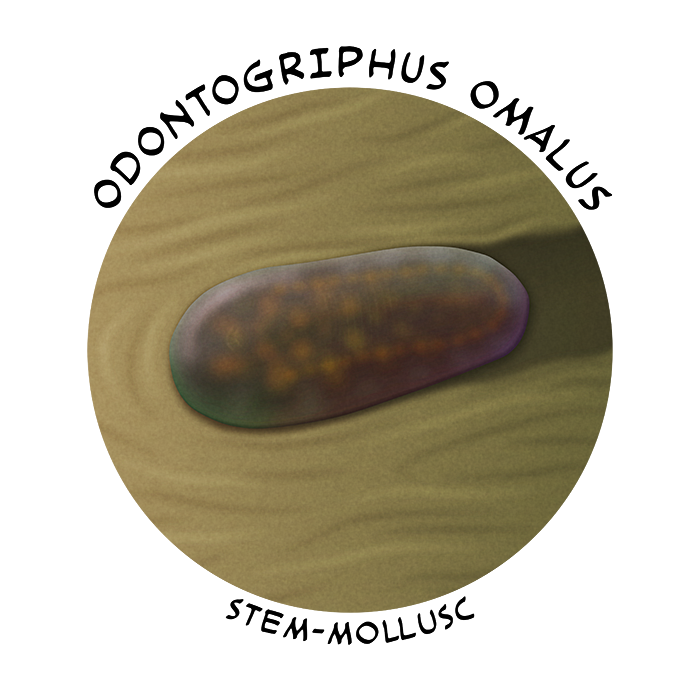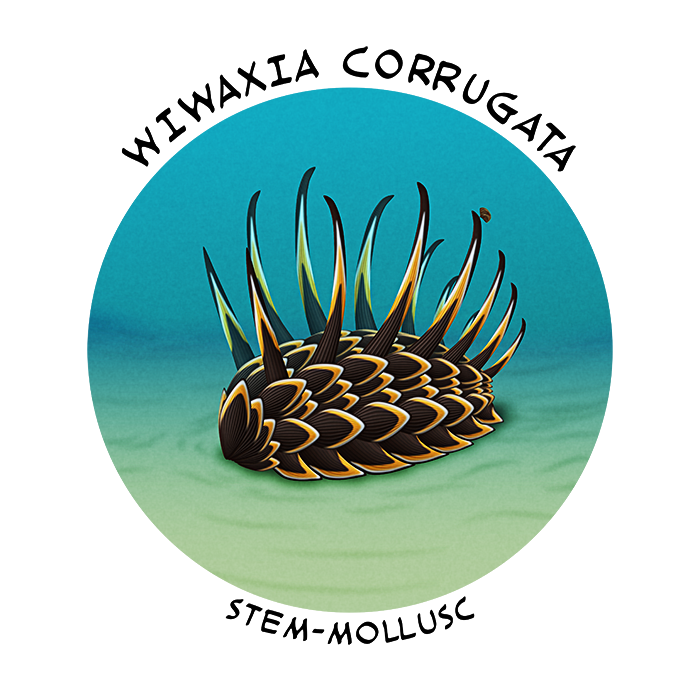Molluscs are one of the largest animal phylums, second only to the arthropods, and are also hugely diverse, found in marine, freshwater, and terrestrial environments all over the world. Not only are familiar modern animals like bivalves, slugs and snails, and squid and octopuses included in this huge lineage, but also nautiloids, chitons, tusk shells, monoplacophorans, worm-like aplacophorans, and the extinct ammonites and orthocerids.
Like the annelids they’re lophotrochozoan spiralians, and their exact evolutionary relationships within that group are a bit uncertain. But their fossil history seems to go back at least 558 million years with the “mollusc-like” Ediacaran Kimberella, and the earliest members of most major mollusc lineages had probably already diverged from each other before the start of the Cambrian.
The common ancestor of all molluscs probably had features like an unsegmented body, a muscular foot on their underside, a mantle and mantle cavity, a radula, and possibly a tough but non-mineralized leathery “shell” – and Odontogriphus omalus may represent an early stem lineage retaining that basic body plan into the mid-Cambrian.

Known from the Canadian Burgess Shale fossil deposits (~508 million years ago), this vaguely slug-like animal grew up to 12.5cm long (5″) and was probably a grazer, crawling over the seafloor and feeding on microbial mats.
Its classification has been debated for some time, sometimes being placed closer to annelids or brachiopods, but more recent evidence of a radula-like feeding apparatus and a muscular foot suggest it really was a stem-mollusc.

The affinities of the strange-looking Wiwaxia corrugata have been even more controversial, with its classification flipping back and forth between annelids and molluscs over the last few decades. But in recent years the discovery of a radula-like mouth apparatus and a muscular crawling foot have swung the general opinion more firmly towards stem-mollusc.
Originally discovered in the Burgess Shale, fossils of various wiwaxiid species have now also been found in Cambrian deposits in Utah, Russia, China, Europe and Australia, ranging from about 518 to 504 million years ago – showing that this lineage had a worldwide distribution, and that their body plan barely changed for at least 15 million years.
Wiwaxia had a domed body covered in chitinous plates and spines with a ribbed texture. It could reach around 5cm long (2″), with the longest spines about the same length, and individual sclerites were shed and replaced as it grew.
It seems to have also been a mat-grazer, with its armor serving to protect it against predators like anomalocaridids. Some specimens have small Nisusia brachiopods attached to their plates or spines in what seems to be a commensal relationship – the brachiopods gained a “mobile home” that allowed them to filter-feed higher up in the water column while also being protected from predators (at least until that particular sclerite was shed), and Wiwaxia wouldn’t have been harmed or affected by the presence of these “hitchhikers”.
Early grazing molluscs like Odontogriphus and the wiwaxiids seem to disappear from the fossil record in the mid-Cambrian, around the time that the microbial mats they relied on began to become less common. However, some of them may have survived for longer than previously thought, since fossils of isolated spines from the early Ordovician of Morocco (~480 million years ago) and the mid-Ordovician of Portugal (~465 million years ago) may be evidence of late-surviving wiwaxiids, possibly relict populations living in isolated refugia environments.
